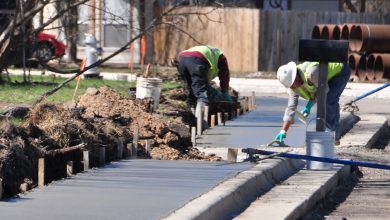6 Repeat OSHA Citations In A Row -When Is Criminal Negligence Considered?
![]() As long as a repeat-offending employer does not knowingly make false statements to OSHA and does not have a worker die from a willful violation of a safety standard…
As long as a repeat-offending employer does not knowingly make false statements to OSHA and does not have a worker die from a willful violation of a safety standard…
Robert Box | Exclusive to Corridor News
Once again, The Occupational Safety & Health Administration (OSHA) cited a Marietta, Georgia based roofing contractor, Jose A. Serrato, for exposing workers to dangerous fall hazards –this time, in Birmingham, Alabama. This marks the seventh fall-related citation from OSHA in 5 years (sixth repeat violation) with apparently no end in sight.
So when can OSHA pursue criminal negligence for employers who allegedly refuse to comply with the law and continue to expose workers to deadly hazards?
Serrato’s workers were unprotected from falls while at a height of 28 feet, which earned the employer $133,604 in penalties (1 Serious and 1 Repeat violation) in this most recent citation. Why isn’t OSHA pursuing criminal charges based on the employer’s apparent disinterest in the law?
According to the OSH Act (29 U.S.C. §651 et. seq., – 29 U.S.C. § 666), the statutory bases for criminal prosecution must be one of the following:
- For giving advance notice of an OSHA inspection, the penalty is not more than $1000 fine and/or 6 months imprisonment;
- For knowingly making false “statement, representation, or certification in any application, record, report, or other document filed or required to be maintained,” the penalty is not more than $10,000 fine and/or 6 months imprisonment; and
- For willful violation of a safety standard causing death of an employee, the penalty is not more than $250,000 (or $500,000 if the employer is a corporation) fine and/or 6 months imprisonment.
So, as long as a repeat-offending employer does not knowingly make false statements to OSHA and does not have a worker die from a willful violation of a safety standard, the company can seemingly continue to write checks and carry on with business as usual.
For the example of roofing company Jose A. Serrato’s situation, if the next interaction with OSHA follows a worker’s fatal fall, things would obviously change considerably, but OSHA would still be required to prove the following:
- The defendant is an employer engaged in a business affecting commerce;
- The employer violated a “standard, rule, or order” or any regulation under the OSH Act;
- The violation was willful, and
- The violation caused the death of an employee.
What is “willful” with regard to an OSHA violation? It means the employer knowingly and purposely violated a standard with intentional disregard for the standard or with indifference to its requirement. While OSHA must prove the employer willfully allowed the OSHA violation to occur, the government has two factors in its favor:
- The government does not have to prove specific intent of the employer to harm the worker; and
- Ignorance of the OSHA standard is generally not a defense because it shows plain indifference to the law.
Josa A. Serrato is permitted 15 business days from the receipt of its citations and proposed penalties to pay the penalty and comply with the citation’s directives, schedule an informal conference with OSHA’s Area Director, or contest the findings in front of the independent Occupational Safety & Health Review Commission.
Robert Box is the owner of Safety First Consulting and is a contributor of SM Corridor News. Box helps businesses identify OSHA compliance issues in their workplaces, manage their safety programs and become accountable for the results. In addition to offering custom written safety programs for companies, Safety First Consulting provides required safety training, industrial hygiene sampling, noise sampling and workplace inspections. You can read more from Robert Box under Business.






